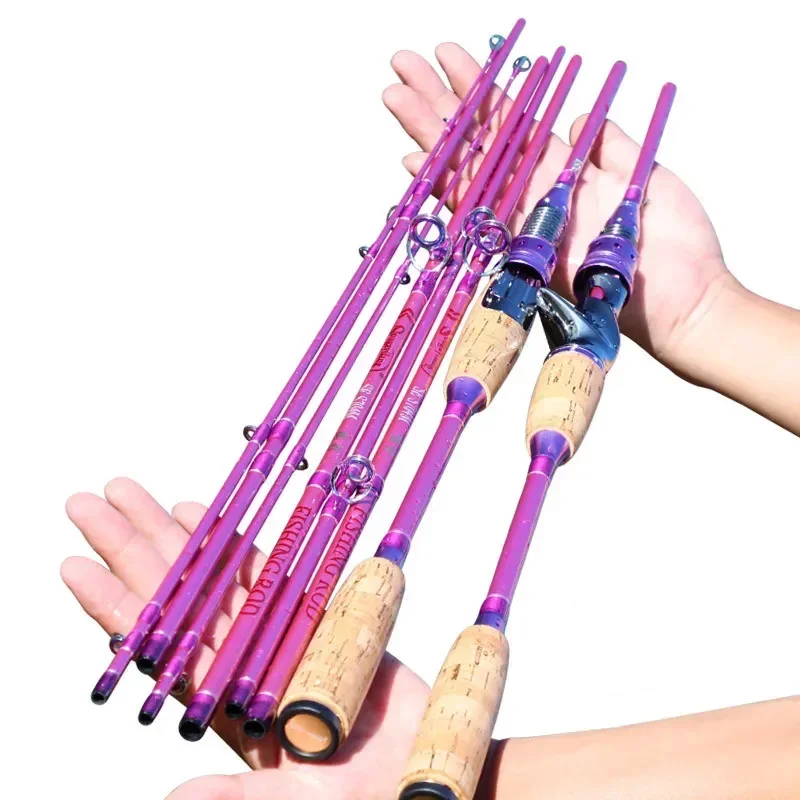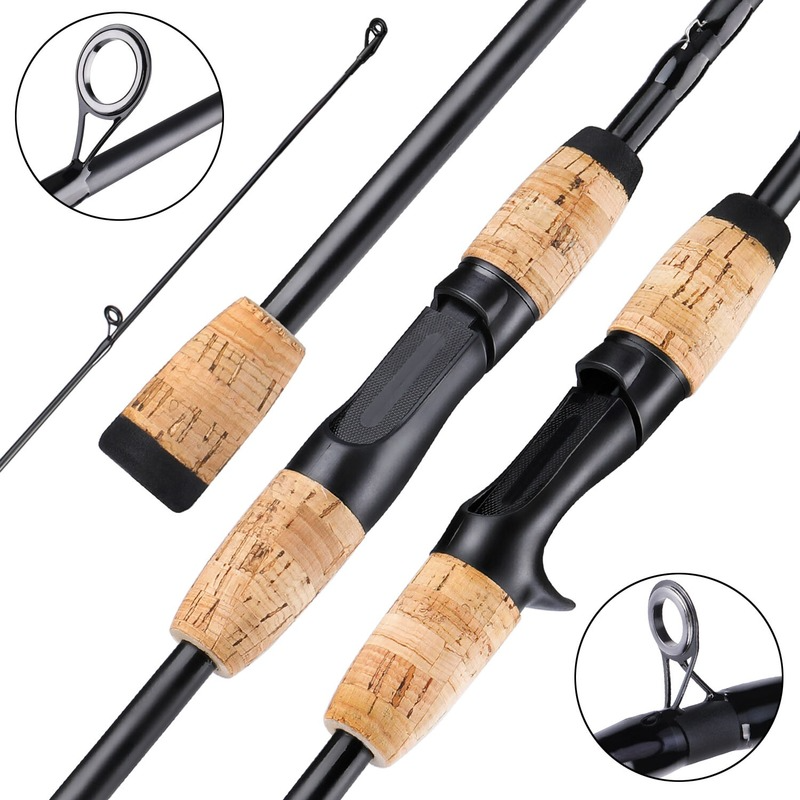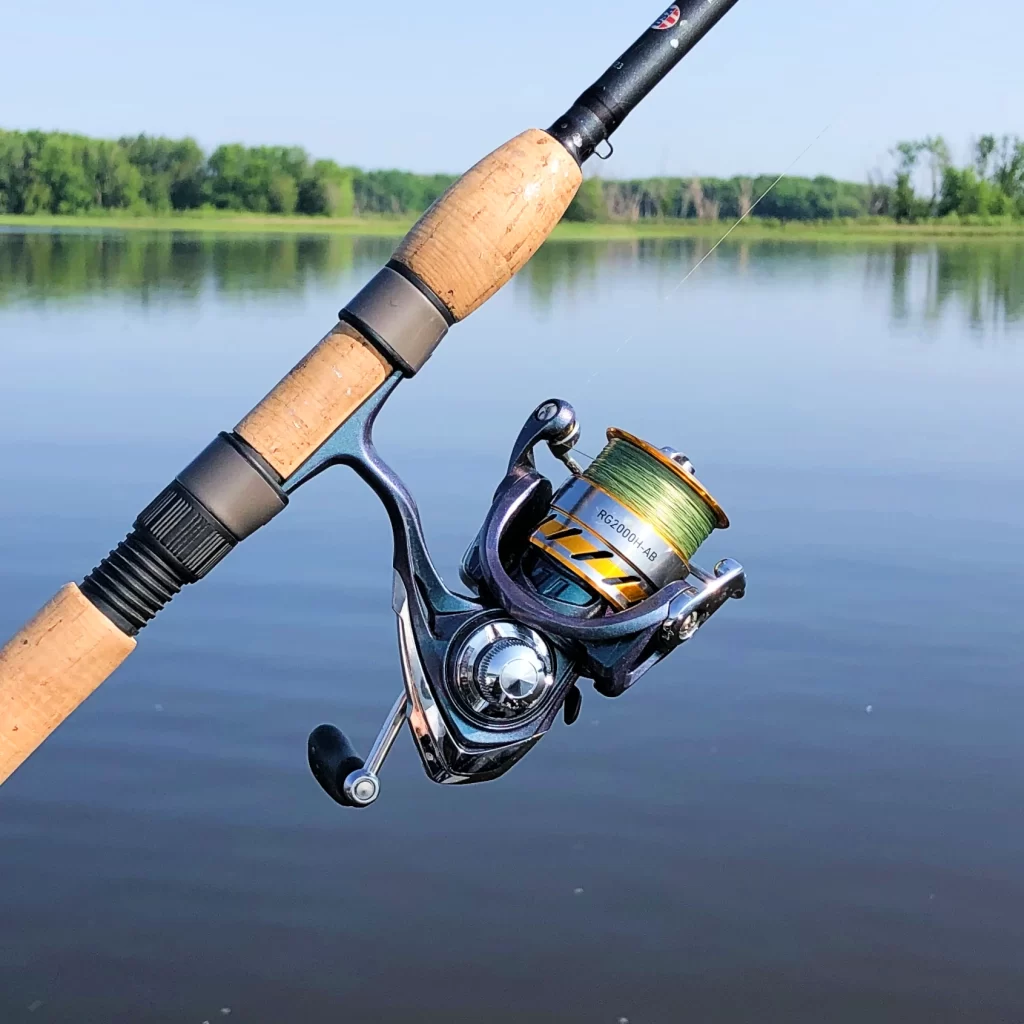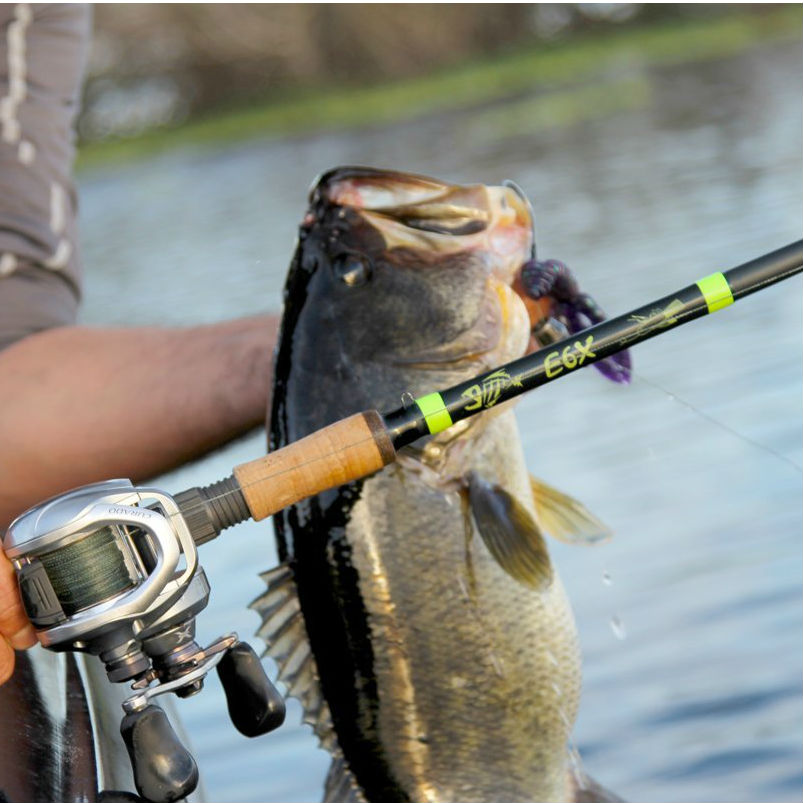When it comes to bass fishing, having the right equipment can make all the difference between a successful outing and a frustrating day on the water. Among the essential gear, rods for bass fishing stand out as a crucial component that significantly impacts your angling experience. Whether you’re a seasoned angler or just starting, understanding the various types of rods and their specific features can help you make an informed decision, ensuring that you’re well-equipped to tackle any bass fishing adventure.
 Introduction
Introduction
Bass fishing is a popular sport that requires specific gear. Choosing the right rod is essential for catching bass effectively. In this section, we will explore the basics of bass fishing rods. This includes understanding different types of rods and their features. Knowing the right rod can improve your fishing success significantly.
Key Factors in Selecting a Rod
Selecting the right rod for bass fishing involves several key factors. Understanding these factors can help you choose a rod that enhances your fishing effectiveness and enjoyment.
Overall Length
The length of the rod influences its casting ability and control. Shorter rods offer better accuracy in tight spots. Longer rods improve casting distance and are useful in open waters.
Action
Action refers to how much the rod bends when pressure is applied. Faster actions bend closer to the tip, providing sensitivity and faster power for setting hooks. Moderate actions bend nearer the middle, suitable for treble hook lures like crankbaits.
Power
Power determines the rod’s lifting strength. It should match the target fish size and the fishing environment. Heavy power rods handle big bass and dense cover. Medium-heavy rods are versatile for various conditions.
Knowing these factors helps target the right rod for your fishing needs. Choose based on where and how you fish to improve your bass catching rates.
Best Rods for Different Fishing Techniques
Choosing the right rod for different fishing techniques is crucial for bass fishing success. Each technique may require a specific type of rod to enhance the effectiveness of lure presentation and fish fighting capabilities. Here’s a breakdown of the best rods suited for various fishing techniques:
Spinning Rods for Finesse Fishing
Finesse fishing typically involves lighter lines and smaller lures, making spinning rods ideal. These rods provide the necessary sensitivity and finesse needed to handle delicate bites and light lures effectively. Look for a spinning rod with a fast action and a medium-light power rating to get the best results in finesse fishing scenarios.
Baitcasting Rods for Heavier Lures
For techniques involving heavier lures, such as flipping heavy jigs or casting large spinnerbaits, baitcasting rods are the preferred choice. These rods are designed to handle heavier lines and provide greater control and accuracy, essential for targeting bass in cover. Opt for a baitcasting rod with a medium-heavy to heavy power rating and a fast action to efficiently manage the larger lures and tougher fishing conditions.
Top Rated Rods for Various Fishing Scenarios
Choosing the right rod can make a significant difference in your fishing success. Here are top picks for different scenarios:
Best Overall Rod
The G.Loomis IMX Pro 844C stands out as the best overall rod for bass fishing. It combines versatility with performance, making it suitable for various techniques. This rod ensures powerful casting and offers great sensitivity, ideal for detecting subtle bites.
Best for Spinning Techniques
For those who prefer spinning techniques, especially when finesse fishing, the Dobyns Xtasy 723 is a top choice. Its responsive action and light feel make it perfect for delicate presentations, ensuring you have the right touch for finesse techniques.
Best for Baitcasting
If you’re focusing on baitcasting, especially with heavier lures, consider the Shimano Expride B 7’2” MH. This rod excels in casting precision and is robust enough to handle larger baits. Its design offers the strength needed for pulling bass out of heavy cover.
Each rod has unique attributes tailored to specific fishing conditions and techniques. By selecting the right rod for your scenario, you enhance your chances of catching more bass.
Maintenance Tips for Bass Fishing Rods
To ensure your bass fishing rods last long and perform well, regular maintenance is crucial. Here are tips to keep your fishing rods in prime condition:
Cleaning Your Rod
After each use, wipe down your rod with a soft cloth to remove dirt and grime. Use mild soap and water for a thorough cleaning occasionally, ensuring to rinse well and dry completely before storage.
Check for Damage
Inspect your rod regularly for any signs of wear or damage, such as cracks, frays, or loose fittings. Pay special attention to the guides, as they are critical for smooth line movement.
Storing Your Rod
Store your rods horizontally or in a rod rack to prevent bending or warping. Avoid leaving them in direct sunlight or in very hot places, like a car trunk, to prevent material degradation.
Protect the Guides
Use a light oil on the guides to keep them smooth. This reduces friction and can extend the life of both your rod and fishing line.
Handle Repair
If your rod’s handle is damaged or wears out, consider rewrapping it or adding a new grip. Comfort in handling your rod is important for effective fishing.
Regular Use
Regular use can actually keep your rod in better shape. It prevents the moving parts from stiffening and allows you to spot potential issues before they turn serious.
Consistent care and proper storage of your bass fishing rods will not only enhance performance but will also save you money in the long run on replacements and repairs. By following these maintenance tips, you can ensure that your rods for bass fishing are always ready for your next angling adventure.
 Enhancing Your Bass Fishing Experience with the Right Rod
Enhancing Your Bass Fishing Experience with the Right Rod
Matching Rods with Reels
Pairing the right rod with a suitable reel is essential for optimal performance.
- Spinning Reels: These reels are best matched with spinning rods, offering a balanced combination for versatile fishing techniques.
- Baitcasting Reels: Baitcasting rods should be paired with baitcasting reels to ensure better control and accuracy, especially when using heavier lures.
Selecting the Appropriate Lure Weight
Different types of bass lures require varying rod sensitivities and strengths.
- Lightweight Lures: For finesse techniques using small baits, opt for a lighter rod with fast action for increased sensitivity.
- Heavyweight Lures: When targeting larger bass with bigger lures, choose a rod with medium to slow action and higher power to handle the added weight and prevent breakage.
Balancing Sensitivity and Strength
A balanced rod provides the right amount of sensitivity to detect bites while offering the strength to handle powerful bass.
- Sensitivity: A sensitive rod allows anglers to feel even the slightest nibbles, improving the chances of successfully hooking the bass.
- Strength: A strong rod ensures that it can withstand the fight of a large bass without bending too much or breaking.
Common Mistakes When Choosing a Rod
Selecting the right rod for bass fishing can be tricky and involves avoiding some common pitfalls. Here are several mistakes that can negatively impact your fishing success:
Choosing the Wrong Length
Many anglers overlook the importance of rod length, which directly affects casting accuracy and control. A rod too long may be cumbersome in tight spaces, while a short rod may lack the needed casting distance in open waters.
Ignoring the Rod Action
Choosing a rod with inappropriate action for the intended fishing technique can lead to poor lure presentation and missed fish. Fast action rods are great for single hooks, whereas moderate action suits treble hooks better.
Overlooking Rod Power
The power of the rod should match the size of the fish and the thickness of the cover. Using a light power rod for big bass in heavy cover can lead to broken rods and lost fish.
Not Considering the Material
Rod materials impact performance and durability. Graphite rods are sensitive and lightweight, perfect for finesse techniques. Composite rods, mixing fiberglass and graphite, offer durability and flexibility for a variety of baits.
Forgetting Guide Quality
Low-quality guides can damage your line and affect casting distance and accuracy. Ensure the guides are smooth and properly attached.
By being mindful of these common errors and carefully selecting a rod suited to your fishing needs, you enhance your bass fishing success dramatically.
 Sustainable and Ethical Considerations in Choosing Bass Fishing Rods
Sustainable and Ethical Considerations in Choosing Bass Fishing Rods
Eco-Friendly Materials
Many anglers are now opting for rods made from sustainable materials. Choosing rods constructed from recycled graphite or responsibly sourced materials can reduce your environmental impact without compromising performance.
Ethical Manufacturing Practices
Supporting brands that prioritize ethical manufacturing ensures that your fishing gear is produced responsibly. Look for companies that adhere to fair labor practices and maintain transparency in their production processes.
Longevity and Durability
Investing in a high-quality rod reduces the need for frequent replacements, promoting sustainability. Durable rods withstand the rigors of bass fishing, providing reliable performance over many seasons.
Innovations and Trends in Bass Fishing Rods
Advanced Materials and Technology
The fishing industry continuously evolves, incorporating advanced materials and technology into rod design. Innovations such as carbon fiber composites and improved resin systems enhance the strength and sensitivity of bass fishing rods, offering anglers better performance and durability.
Customization and Personalization
Modern rods often come with customization options, allowing anglers to personalize their gear. From adjusting rod length and action to adding custom grip designs, personalization enhances the fishing experience and ensures the rod suits individual preferences.
Multi-Function Rods
Some manufacturers are developing multi-function rods that can adapt to various fishing styles and techniques. These versatile rods are designed to switch between spinning and baitcasting setups, providing greater flexibility for anglers.
 F&Q: Everything You Need to Know About Rods for Bass Fishing
F&Q: Everything You Need to Know About Rods for Bass Fishing
How do I choose the right rod length for bass fishing?
Choosing the right rod length depends on your fishing environment and technique. For tight spaces like dense vegetation or docks, shorter rods (6-6.5 feet) offer better control. For open waters and long casts, longer rods (7 feet) provide increased distance and leverage.
What is the difference between spinning and baitcasting rods?
Spinning rods are generally more versatile and easier to use, making them ideal for beginners and various fishing techniques. Baitcasting rods offer greater accuracy and control, especially when using heavier lures, making them preferred by experienced anglers targeting larger bass.
Can I use the same rod for different types of lures?
Yes, many rods are versatile enough to handle different types of lures. However, it’s important to match the rod’s action and power to the specific lure you’re using to ensure optimal performance and prevent damage to the rod or lure.
How important is rod sensitivity in bass fishing?
Rod sensitivity is crucial as it allows you to detect even the slightest bites. A sensitive rod helps in quickly setting the hook and reduces the chances of losing a catch due to missed bites.
Should I invest in a high-end rod for bass fishing?
Investing in a high-end rod can enhance your fishing experience with better performance, durability, and features. While they are more expensive, high-quality rods often last longer and provide superior handling and sensitivity, making them worthwhile for serious anglers.
 Conclusion: Maximizing Your Fishing Success
Conclusion: Maximizing Your Fishing Success
Ensuring your bass fishing success involves more than just having a great bass rod. It’s about making informed choices that match your gear to your fishing conditions and techniques. Always consider the actions, power, and length needed for your intended use, whether it’s finesse fishing with spinning rods or using baitcasting rods for heavier lures.
A quality rod for bass fishing can significantly elevate your experience. Top-rated rods for bass fishing like the G.Loomis IMX Pro 844C for versatility, the Dobyns Xtasy 723 for spinning techniques, and the Shimano Expride B 7’2” MH for baitcasting are excellent examples of gear that can boost your catch rates. These options reflect the different scenarios that anglers encounter, offering a range of capabilities from sensitivity to strength.
However, even the best rods can fail without proper maintenance. A consistent care routine, such as cleaning, storing correctly, and regular inspection, will keep them in peak condition. Remember to avoid common pitfalls, such as ignoring the importance of rod action or overlooking the quality of the guides.
In conclusion, choosing and caring for your fishing rod wisely is the key to maximizing your fishing success. With the right rod in hand and good maintenance habits, you will be well-equipped to catch more bass and enjoy your time on the water. Happy fishing!